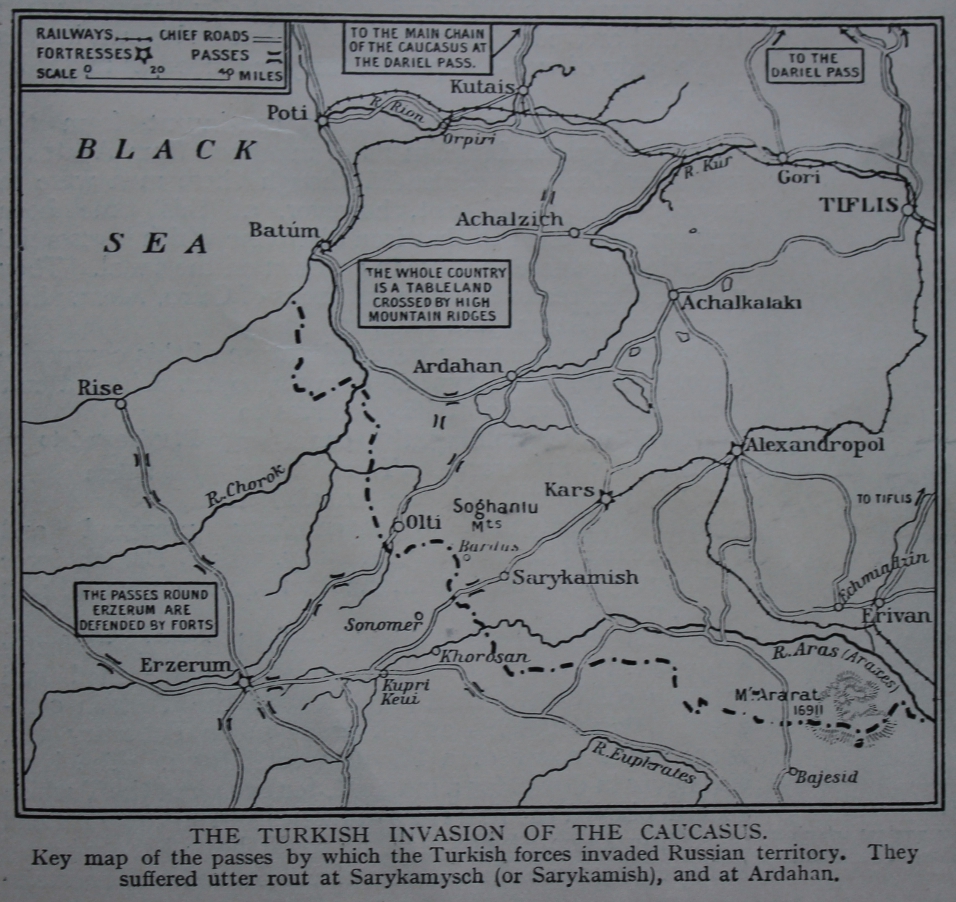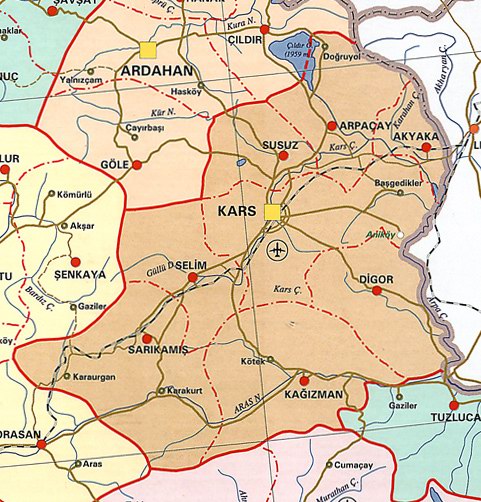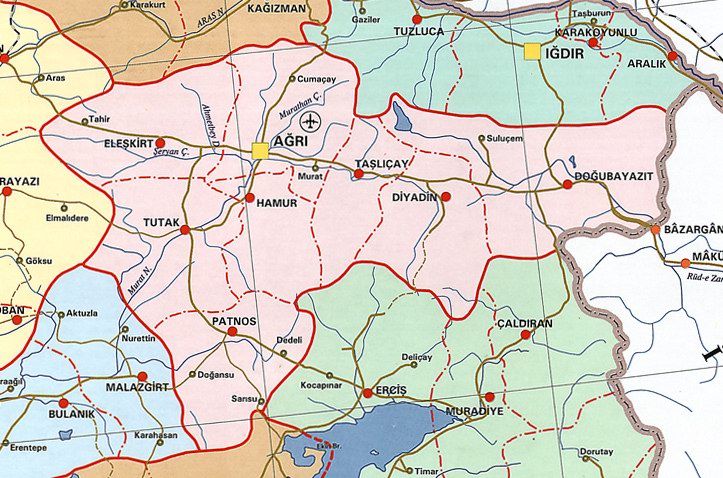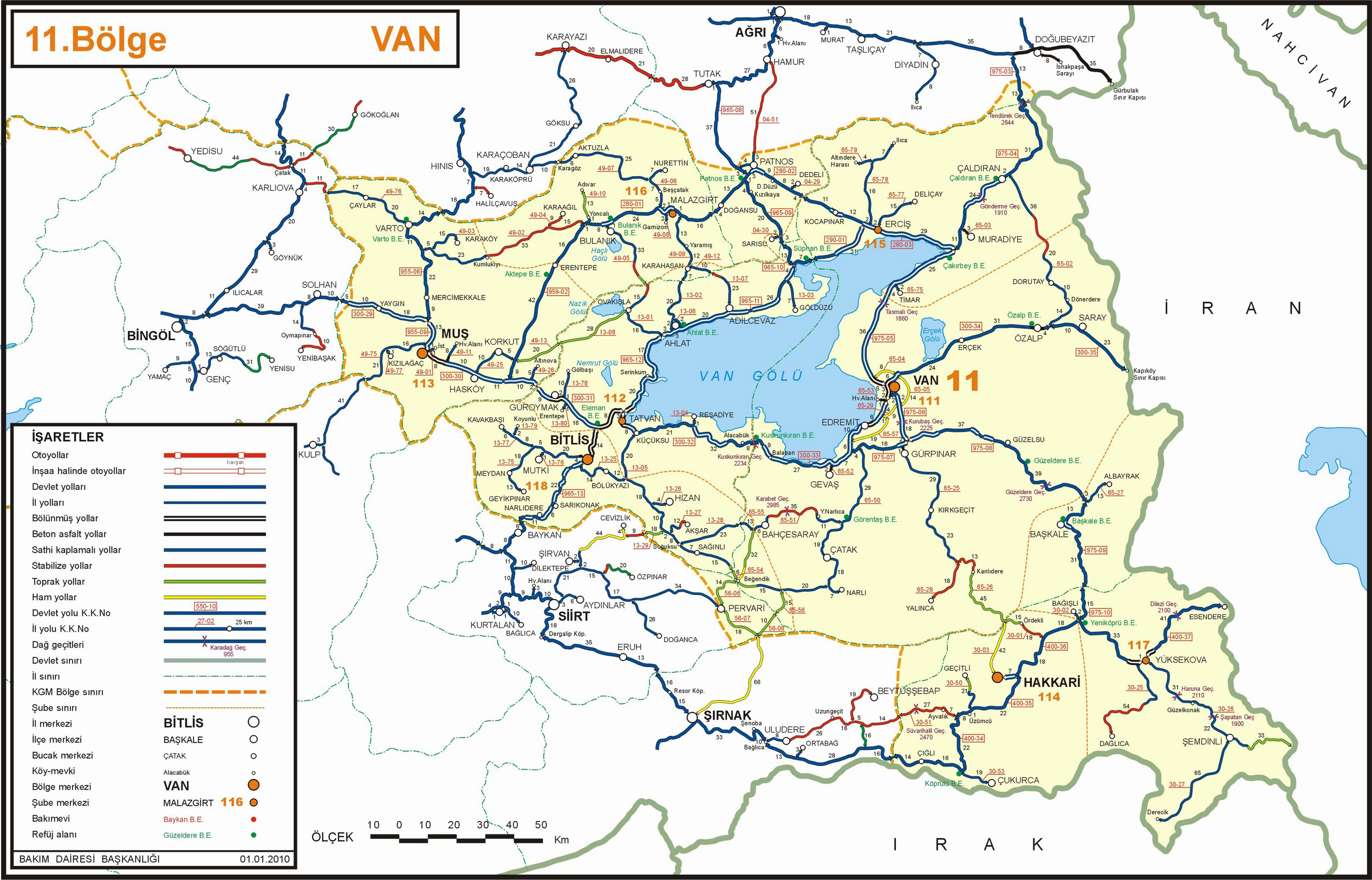Turkish-Russian confrontation on the Caucasus Front in
the Fall of 1914 ends with a description of the decisive
Battle of Sarıkamış, a brutal defeat for the Turks, at the
end of December.//

Evolution of the Turkish Operation
The Third Turkish Army’s lightning attack on Kars was prevented by
its poor means of communication, delays in moving reserves and
ammunition, and the necessity of breaking down the Russian defenses
before a support force arrived. In more than three weeks the Turks
were barely able to traverse the 23-kilometer distance between Azap
and Zivin.
Subsequently, on 3 Cedi (December), the 6th, 7th, 28th and 29th
divisions of the Ninth Turkish Army and two divisions from the Tenth
Army Corps broke the Russian resistance at Zivin and reached the
border. On the fourth day of the same month, Surpalan and Karaurgan
fell into Turkish hands, and on the fifth, they passed through Siyak, north
of Surphaç. On the sixth of the month (13 December), the Turks seized
Sarıkamış, the starting point of the Kars railway, after a bloody clash.
The Russian gave up Mt. Soğanlı and retreated to Kara Hamza.

On the Third Army’s northern front, a division moving from Artvin
seized Otishane and on the tenth of Kavis arrived at Ardanuç, from
where it extended its movement toward Ardahan. Later, on the sixth
of Cedi, the Turks broke the Russian resistance at the Balanuş pass and
reached Ardahan. The Russians in the Oltu Çay valley were
completely surrounded. Here they resisted a division of the Tenth
Army Corps that was advancing from north of Narman. Further to the
north the Ayta and Çürük branches entered the fortress location ten
kilometers from Batumi and the Russians set up their own positions on
the peaks north of Aharis.
to retreat from Tutak but, receiving reinforcements, they launched a
new attack on the front on the sixth of the month. After this, the
battlefront was sometimes at Hamur ((just south of Ağrı)) because of
Turkish pressure, or at Tutak ((further south of Ağrı)) because of Russian
attacks.

Clashes on the Iranian border, which was of secondary importance,
extended from Saray on Turkish territory ((Van)) to Kotur on the Iranian
side. Prior to a Russian regiment in Iranian Kurdistan being crushed, the
Turks seized Savuşbulak and headed toward Meyandu Ab. From there,
hired Kurdish irregulars under the command of Şücaüddevle
completely bedeviled the Russians and seized six cannon. The Turkish
-Kurdish force headed from Meydandu Ab toward Murağa and Bınab
with the goal of seizing Tebriz.

So because the Turks took too long to reinforce their forces at Köprüköy
and Azap, and because they were facing an enemy that had been able
to gather more forces at Kars with support detachments brought in from
Siberia, the result was that the Turks’ forward progress ended at this
time and place.
The Russians’ Counter-operation
On 8 Cedi (14 December), the main force of the Third Army left
Sarıkamış and suffered many casualties in the face of stiff resistance
from the Russians at Kara Hamza, which they had occupied, and their
batteries, which had been reinforced to a degree far beyond what they
were prior to the war. The Turks’ efforts to defend the land east of
Sarıkamış against the counterattack of the Russians, who had been
reinvigorated, produced no result. They were forced to retreat to
Sarıkamış and on 10 Cedi (16 December), after giving up 6,500
prisoners and losing a great many soldiers and equipment, they
continued their retreat toward the border.
A Turkish division that wanted to march to Kars from Ardahan in
the month of Cedi (December) was forced to do battle with the
reinforced Russians who had taken up positions in the hills south
of Ardahan.
The eigth regiment lost its regimental banner and a portion of its troops
because of the Cossacks’ cavalry attack, while the remainder of the
regiment was forced to retreat toward Ardahan under enemy artillery
fire. From here, despite the snow-covered roads and hot pursuit of the
Cossacks, they stopped at Balanuş Pass in order to cross the valley.

On the sixteenth of Cedi, Russian forces pursued the remnants of the
Ninth and Tenth Army Corps toward the border and defeated the
Eleventh Army Corps at Karaurgan, the last village on Russian
territory. This army corps had come to collect the defeated elements
but because it arrived late it did not figure in the result of the battle –
after five days of fighting the Eleventy Army Corps, as well, retreated
and the 92nd regiment was crushed. At this point, on 21 Cedi , the
Russians were able to cross the border and pursue the Turks, which
they did up until Horasan-Ardost. Here the Russians defeated the
33rd and 34th divisions of the Eleventh Army Corps that were guarding
the Erzurum road. A portion of the Turkish battery was seized, as well.
The Russians, too, were forced to conclude their attack because of the
distance from their main force and the illness of their soldiers.
At this time, on 27 Cedi, the battlefront was motionless because of the
effect of the snow. The Russians were unable to attack the Erzurum
fortifications, especially because the Turks were able to gather
reinforcement detachments and move them quickly to the battlefield.
On the same date, the Turks evacuated Ardahan and Oltu and retreated
in the Cürüksu valley. In Iran, the Turks occupied Tebriz and Sufiyan,
with support from the Kurds.
Subsequently, while the Russians were preparing a counterattack,
because there were no Turkish or Kurdish forces in Tebriz, they entered
here without a fight and moved on toward Murağa.
So, with regard to this situation, the Turks’ operation was fruitless
on all sides.

Battle of Sarıkamış, 26 December 1914 (Dates in Iranian's
article are about two weeks before, owing to calendar conflicts
in those days.)
Result
Was the Turks’ failure the consequence of the Russians’ unorthodox
attacks or their hindering of the Third Turkish Army’s operations,
or was it the Turks’ poor choices in the execution of their operation?
The reason for this failure should more likely be sought in the poor
preparation and misdirection of the Turkish General Staff’s estimation
of how events would proceed. Because for its own army, the Turks
did not appreciate nor give importance to their poor roads,
communications and transport structures nor to the inadequacy of the
clothing required for soldiers to fend off the cold in the high mountains
in winter and, subsequently, to the lack of ammunition.
Nevertheless, the Turks’ extremely high espri d’corps prevented this
defeat from becoming a hopeless annihilation.
//End of Part IV/FINAL//

Hiç yorum yok:
Yorum Gönder